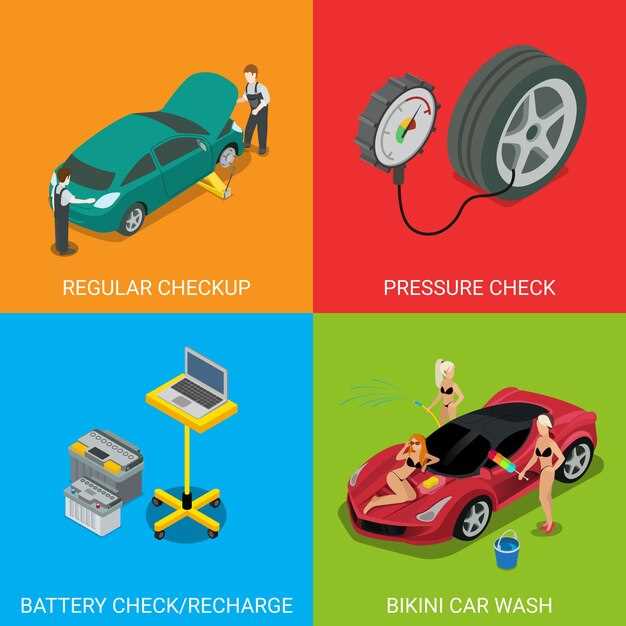
In the automotive industry, steering systems play a crucial role in ensuring driver control and vehicle maneuverability. Among the most significant advancements in steering technology are traditional power steering systems and modern electric steering systems. Each type offers unique benefits and drawbacks, making it essential for car buyers and enthusiasts to understand the differences, particularly in terms of performance, efficiency, and maintenance.
Power steering systems have been a staple in vehicles for decades. Utilizing hydraulic mechanisms to assist the driver in turning the steering wheel, these systems provide a well-established blend of power and responsiveness. However, the traditional nature of hydraulic steering comes with its own set of limitations, such as fluid leaks, added weight, and the need for regular maintenance.
On the other hand, electric steering systems have emerged as a revolutionary alternative, integrating electric motors to assist with steering. This innovative approach not only reduces the weight of the system but also enhances fuel efficiency and offers customizable steering feedback. Nevertheless, electric steering systems may face challenges related to cost, complexity, and potential reliability issues over time.
Understanding the advantages and disadvantages of each steering type is vital for drivers looking to make informed decisions about their vehicles. The following sections will delve deeper into both power steering and electric steering, providing a comprehensive comparison that highlights their respective strengths and weaknesses.
Power Steering vs Electric Steering: Advantages and Disadvantages

Power Steering systems use hydraulic pressure to assist the driver in steering. One of the primary advantages of hydraulic power steering is its strong feedback and responsiveness, providing a more connected driving experience, especially at high speeds. Additionally, these systems generally perform well in various weather conditions, including extreme cold, as they are not reliant on electrical components that may be affected by temperatures.
However, hydraulic power steering systems come with several disadvantages. They are typically heavier due to the hydraulic components, which can negatively affect fuel efficiency and overall vehicle weight. Maintenance can also be a concern, as leaks in the hydraulic system may require costly repairs. Furthermore, power steering systems can consume engine power, leading to decreased overall efficiency.
Electric Steering, or Electric Power Steering (EPS), utilizes electric motors to provide steering assistance. Among its key advantages is weight reduction; EPS systems eliminate the need for hydraulic pumps and fluid, resulting in lighter vehicles that can enhance fuel economy. Moreover, electric steering systems allow for advanced technology integration, such as variable assist based on speed, which can enhance the driving experience and promote safety through features like lane-keeping assistance.
On the downside, electric steering systems may lack the same level of feedback as hydraulic systems, potentially leading to a less engaging driving experience. Additionally, they are more reliant on electronic components, which can introduce complexity and dependency on battery life and electrical systems. In the case of a power failure, steering assistance may be compromised, posing safety concerns in critical situations.
In conclusion, both power steering and electric steering have distinct advantages and disadvantages. The choice between the two often depends on the type of vehicle, intended use, and personal driver preferences.
Comparing Maintenance Costs of Power Steering and Electric Steering
The maintenance costs of power steering and electric steering systems differ significantly, impacting the overall cost of ownership for vehicle operators. Power steering, which traditionally employs hydraulic systems, generally incurs higher maintenance costs due to its complexity and reliance on various components such as pumps, hoses, and fluid reservoirs. Over time, hydraulic fluid can leak, necessitating replacements and repairs, which can become costly. Additionally, the hydraulic pump itself can wear out, leading to further repair expenses.
In contrast, electric steering systems are often less expensive to maintain. They utilize electric motors and sensors, which tend to require fewer components than hydraulic systems. This simplicity translates to lower labor costs and reduced frequency of repairs. Electric steering does not depend on hydraulic fluid, eliminating the risks associated with fluid leaks and the need for regular fluid changes. However, when issues arise in electric steering systems, such as sensor or motor failures, they can be more challenging to diagnose and repair, sometimes resulting in high replacement costs.
Another aspect to consider is the longevity of components. Electric systems generally have a longer lifespan and require fewer replacements compared to their hydraulic counterparts. Consequently, while the initial costs of electric steering systems may be higher, their long-term maintenance expenses could be comparatively lower. To summarize, when choosing between power steering and electric steering, it is crucial to evaluate not only the initial costs but also the potential long-term maintenance expenses associated with each type of system.
Evaluating Performance: Handling and Responsiveness in Different Driving Conditions
When assessing the performance of power steering and electric steering systems, handling and responsiveness are crucial factors that vary significantly across different driving conditions. Each steering type presents unique advantages and disadvantages depending on the environment in which a vehicle is used.
1. Urban Driving
- Power Steering: Offers greater feedback and feels more connected during low-speed maneuvers, which is beneficial in crowded urban environments. The hydraulic systems provide a consistent response that drivers often prefer when parking or navigating tight spaces.
- Electric Steering: Typically excels with features like variable ratio steering, allowing for easier turns at low speeds. However, some drivers may find the feedback less engaging, which can lead to a sensation of disconnect during urban driving.
2. Highway Driving
- Power Steering: Delivers stable handling and reliable feedback at high speeds. The weight provided by hydraulic systems helps maintain control, making long-distance driving feel secure.
- Electric Steering: Generally designed to adapt dynamically, which can enhance stability at high speeds. The adaptability can provide less steering effort, but responsiveness may be diminished if not calibrated correctly.
3. Off-Road Conditions
- Power Steering: Offers advantages when overcoming rough terrains due to its robust construction and solid feedback mechanisms. This strength helps drivers maintain control over uneven surfaces.
- Electric Steering: While lighter and more efficient, it may lack the necessary feedback and robustness to tackle demanding off-road conditions effectively. Certain electric steering systems may struggle with the lack of input from the terrain.
4. Weather Influences
- Power Steering: Provides predictable response and maintains steering feel in various weather conditions, which can enhance driver confidence during adverse conditions like rain or snow.
- Electric Steering: Often incorporates adaptive technology to adjust for traction changes, potentially improving handling during slippery conditions. However, the artificially boosted feel can result in a reduced connection to the road.
Conclusion

The choice between power steering and electric steering revolves around handling and responsiveness, which are influenced by driving conditions. Understanding these distinctions can help drivers select the right system for their specific needs and enhance their driving experience across different environments.
Assessing Weight and Space Considerations for Vehicle Design
In the realm of automotive engineering, the assessment of weight and space is pivotal for optimizing vehicle performance and efficiency. The choice between power steering and electric steering systems significantly influences these parameters, affecting not only the vehicle dynamics but also the overall design framework.
Weight Considerations
Power steering systems typically utilize hydraulic pumps, which can add considerable weight to a vehicle due to their complex components and fluid reservoirs. In contrast, electric steering systems are lighter as they do not require hydraulic fluids and pumps. The reduction in weight from electric steering contributes to improved fuel efficiency and can enhance acceleration performance.
This weight difference becomes increasingly critical in the context of electric vehicles (EVs). Every kilogram saved in the vehicle’s architecture potentially translates to extended driving range and battery efficiency. Therefore, manufacturers are increasingly leaning towards electric steering in the design of modern vehicles, particularly in segments focused on sustainability and performance.
Space Considerations
Space efficiency is another important aspect of vehicle design. Traditional power steering systems require significant spatial allocation under the hood for components such as hydraulic pumps and fluid lines. Conversely, electric steering systems typically demand less space due to their integrated design, allowing for greater freedom in engine compartment layout.
This spatial advantage can lead to more innovative designs, enabling the incorporation of additional features or components such as larger batteries in EVs without compromising on the vehicle’s footprint. The compact nature of electric steering systems also opens up possibilities for enhanced cabin space, contributing to passenger comfort and utility.
Conclusion
The choice of steering system has profound implications for weight and space considerations in vehicle design. Electric steering systems present advantages in both weight and spatial efficiency, which can lead to enhanced performance and innovative vehicle layouts. As automotive design continues to evolve, these factors will remain integral to achieving balance between functionality, efficiency, and modern consumer demands.


